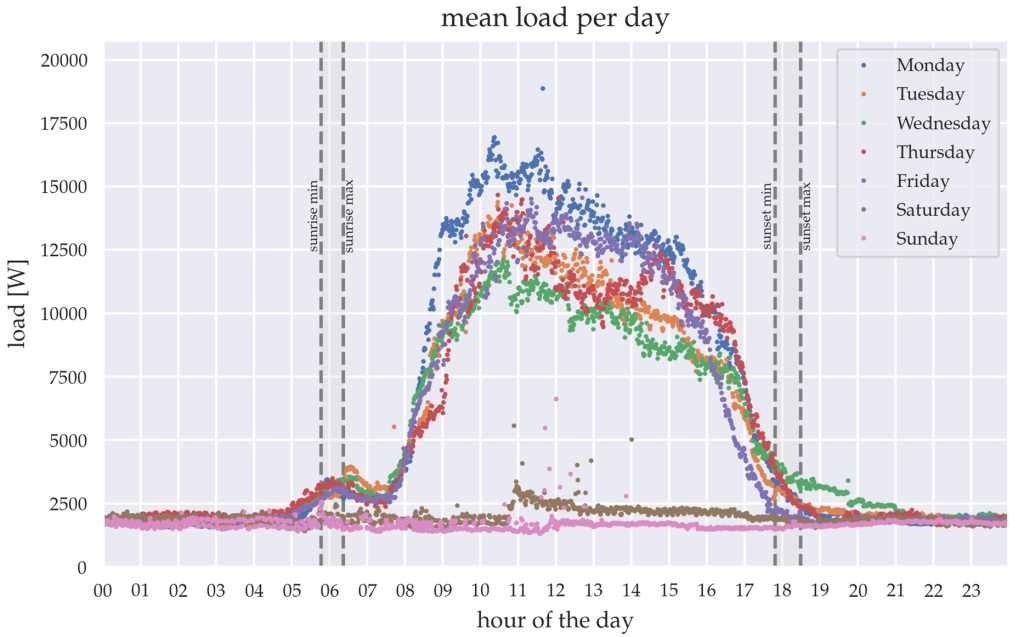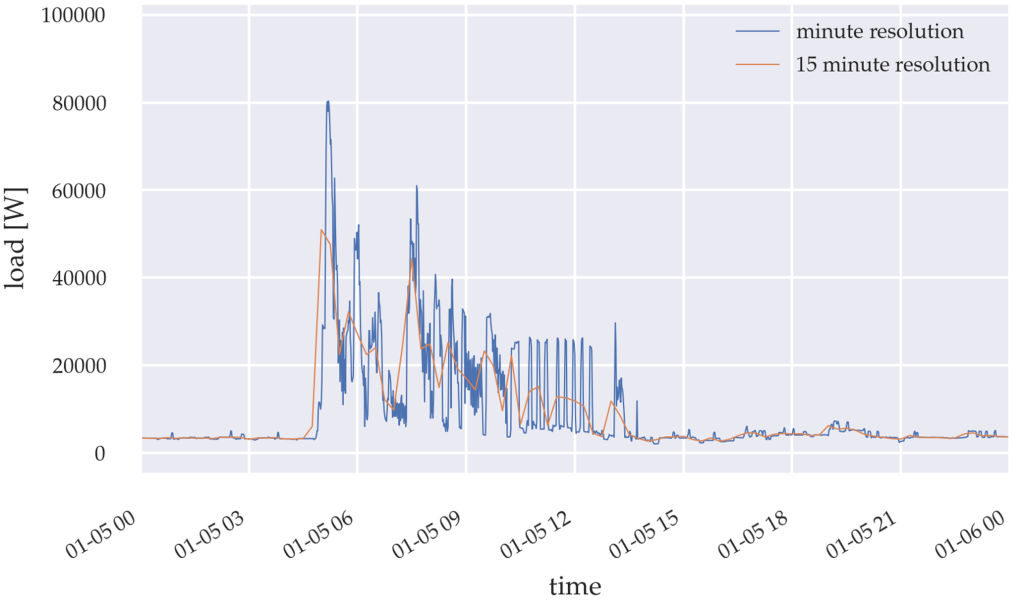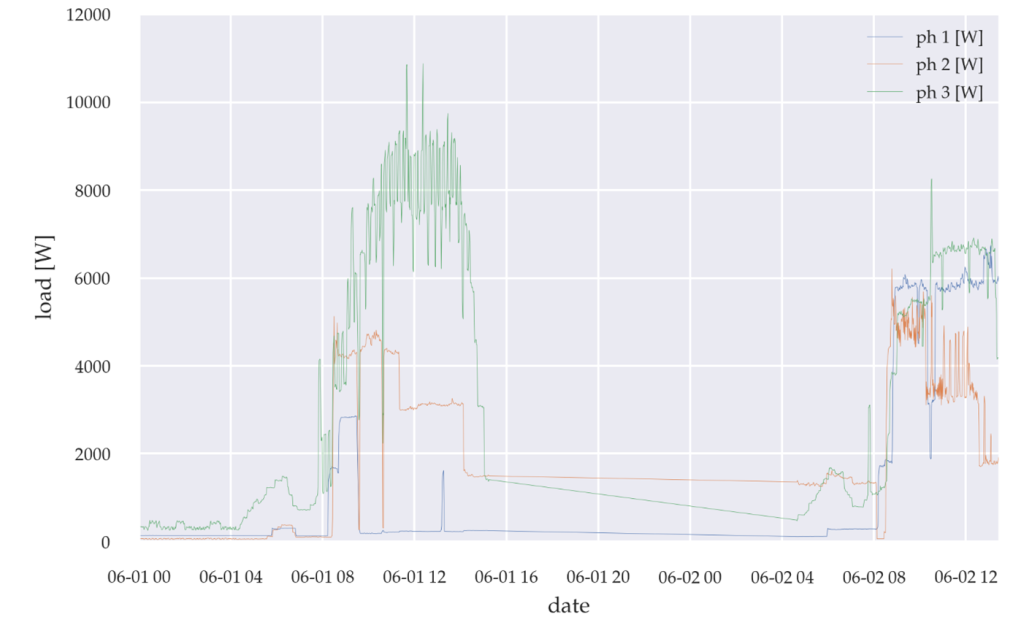
Samer Chaaraoui from the University of Applied Sciences Bonn-Rhein-Sieg is analyzing load data from the field sites of the EnerSHelF project. By analyzing the data, he can identify when and where electricity is used and what indication it has for planning PV-diesel hybrid systems for health facilities. In this article, he is given an insight into the identified load profiles and what they reveal. To ensure confidentiality, the load profiles have been anonymized.
Throughout our research process, we demonstrate how load data can be retrieved from Ghanaian health facilities and how this data can be utilized for research activities. After receiving the first batch of load measurements for each subsection of the St. Michaels hospital in Pramso, Kumasi (01.06.2021 – 06.10.2021) and the St. Dominics hospital in Akwatia (27.11.2020 – 08.02.2021), we carried out a first descriptive analysis for each subsection of the hospital. The data includes typical load profiles of both hospitals’ wards, such as the administration block or the laundry, potentially allowing to extrapolate a load profile to an arbitrary Ghanaian health facility consisting of similar sections. Despite contrasting external factors and setting, surprising similarities with standardized load profiles of German health facilities have been identified, such as a constant baseload throughout the week and an increased load during weekdays and daytime.
In comparison to the data from the national grid operator, we were able to generate new insights due to the much higher temporal resolution in our measurements. In some cases, we were able to observe a doubling of the maximum load when considering minute resolution instead of quarter hour resolution. Going finer to second resolution measurements, these load peaks become even more dramatic, which is a crucial information for the correct dimensioning of a PV-diesel hybrid system. Beside these load peaks, also alternating loads and variabilities become visible within the data. This information is also important for the correct development of a control algorithm, taking these alternating loads and variabilities in consideration with regards to the lifetime of the battery and the diesel generator.

Due to the three-phase measurements on the sites, we were also able to identify unbalanced loads between phases in several sections of the hospitals. This asymmetry can result in an inefficient operation of inverters and diesel generator and can also lead to increased wear and tear on the diesel generator. All these aspects are important findings for researchers and practitioners.

In a next step, we are planning to apply our previously developed load forecasting model with a higher temporal resolution, to see if our methods can identify features within the data which were not visible prior. Furthermore, the gradients and variabilities within the load data we collected also give us some insight how we can increase the reliability of the installed hybrid system components at the Kologo Health Centre – our third field site – using forecasts of the hybrid systems behavior.
Samer Chaaraoui is a Research Fellow at the International Centre for Sustainable Development (IZNE), Bonn-Rhine-Sieg University of Applied Sciences, Sankt Augustin. He holds a master’s degrees in Renewable Energy and a bachelor’s degree in Mechanical Engineering from the University of Applied Sciences Cologne, in which he worked in several laboratories and institutes. He also worked in an international corporation based in Germany prior to his work at the IZNE, prior to his return to the science domain. His main research interest includes control engineering, artificial intelligence and the promotion of alternative energy resources.
